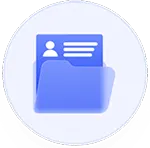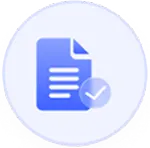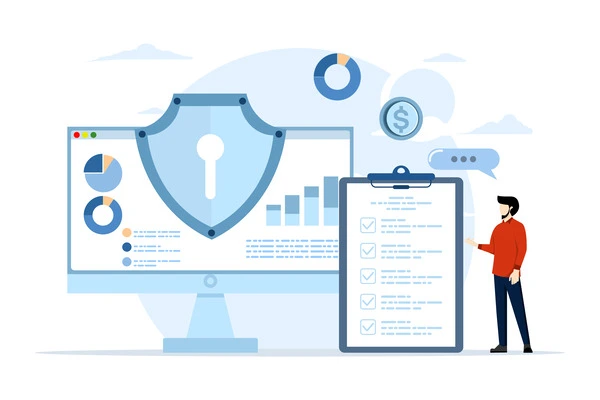Have you ever required an employee’s details and found them lying around in a bunch of spreadsheets? How annoying is that? If that has happened with you, then you know what kind of havoc poor employee data management can create.
A chaotic employee data system is costing your business more than you know. From lost opportunities to costly compliance exposures, the consequences are real. But managing employee data doesn’t have to be a headache. The good news? You can break free from this chaos. Here’s how you can establish an organized employee data management system that works for you.
The Value of Employee Data Management
Prior to discussing the steps, it is necessary to learn why employee management is not simply keeping everything organized.
- 79% of HR leaders are confident that poor employee data management is having a direct impact on decision-making and workforce planning.
- Companies that use centralized data management systems, on average, enjoy a 15% improvement in overall productivity.
These facts highlight why having proper management of employee information is crucial. Here are steps you can use to do it correctly.
Steps for Employee Data Management
Step 1: Start with a Centralized System
Picture having all your employee data—personal information, job performance, compensation details—all in one location. It’s not a dream; it’s what a central HR system can provide. Invest in a platform that brings all your HR activities together, putting an end to disparate spreadsheets and files.
A central system guarantees your data is accurate and available when you require it. Further, it assists you in ensuring compliance by maintaining data storage uniform and secure.
Pro Tip: Search for systems that are scalable and customizable, so your data management can expand with your business.
Step 2: Keep Data Accurate and Consistent
Good management is built on clean data. Prioritize having uniform formats, frequent updates, and accuracy verification.
Set rules for data entry, including regular reviews and standardized naming conventions. This reduces errors and keeps your data valid, correct, and current.
Step 3: Prioritize Data Security and Compliance
HR departments work with sensitive employee data, from social security numbers to bank information. It’s thus important to put in place strong security procedures.
Grant access on a role basis, encrypt sensitive information, and keep up with laws such as GDPR or CCPA. Putting an investment in strong cybersecurity and ongoing compliance training ensures your employee information is safe and legally sound.
Step 4: Leverage Data Analytics for Insights
Imagine being able to predict employee turnover or detect skill gaps from just looking at your employee document management. That’s what data analytics can do. With analytical tools, you can see underlying patterns, which translate to data-based decisions.
Begin with the basics by looking at attendance trends, job performance metrics, and employee engagement. These can inform decision-making that boosts team performance and job satisfaction.
Step 5: Automate Routine Data Tasks
Automation is not merely a buzzword—it’s revolutionizing HR functions. By automating mundane data management activities such as updating staff records, report generation, and sending reminders to comply, you gain precious time for strategic work.
Look at software that provides automated data capture and analysis while integrating with your current systems seamlessly.
Best Practices for Ongoing Employee Data Management
Now that you know the steps, let’s talk about how to manage employee data in your day-to-day operations.
- Set a Clear Policy for Managing Data: Determine what employee data you will be collecting, who has access to it, and how you will be using and storing it. This creates consistency and transparency within the organization.
- Allocate Data Management Responsibilities: Identify and assign individual team members the responsibilities of handling, updating, and auditing employee information. Unambiguous ownership prevents errors and facilitates accountability.
- Perform Routine Data Audits: Periodically audit your employee information to maintain its accuracy and currency. Regular HR audits reveal and correct inconsistencies before they lead to serious errors.
- Enforce Role-Based Data Access: Implement access controls to restrict viewing or modifying sensitive employee data to authorized staff only. This improves security and compliance.
- Backup and Disaster Recovery Plans: Back up employee data regularly and have recovery procedures in place to safeguard against data loss due to unexpected circumstances.
By incorporating these practices into your operations, you can keep your employee data secure, accurate, and ready to deliver valuable insights.
The Role of Technology in Employee Data Management

In the current digital era, technology plays a key role in successful employee data management. The use of a centralized Human Resource Management System (HRMS) can automate processes, increase data accuracy, and enhance compliance.
For example, solutions such as Zimyo provide end-to-end solutions that consolidate employee data, automate processes, and offer analytics capabilities to gain actionable insights. These platforms not only make data management easier but also enable HR teams to make data-driven decisions that lead to organizational success.
Overcoming Common Challenges
Although the advantages of effective employee data management are evident, organizations struggle with implementation. Some of the common challenges are:
- Resistance to Change: Management and employees might resist implementing new processes or systems.
- Data Migration Issues: Data migration from old systems to new systems can be time-consuming and complicated.
- Budget Constraints: New technologies can be expensive to invest in.
To address these issues, it’s necessary to:
- Communicate the Benefits: Clearly explain how better data management will make things more efficient and improve decision-making.
- Carefully Plan the Migration: Create a data migration plan, complete with timelines and assignments.
- Go for Cost-Efficient Options: Look into scalable options within your budget that can expand alongside your organization.
Final Thoughts
Let’s be honest—employee data doesn’t have to be as tedious as a stack of spreadsheets. Done properly, it can be streamlined, efficient, and even fun.
The good news? These steps not only pave the way for improved processes but intelligent, data-powered decisions that drive business forward.
And when you have the right tools and strategies, you can build a future where your data not only enables your business but powers it forward. Schedule a demo today to make te data management a easy task with automation.
Frequently Asked Questions (FAQs)
Start with a Centralized System
Keep Data Accurate and Consistent
Prioritize Data Security and Compliance
Leverage Data Analytics for Insights
Automate Routine Data Tasks
Employee data management process is the process of collecting, storing, and using employee data systematically to assist in HR functions. The major steps are:
- Data Collection
- Data Storage
- Data Utilization
- Data Maintenance
- Data Security
The initial step to successful data management is to establish a clear strategy. This includes determining the business goals of the company and identifying how data can be used to support those goals. Aligning business goals with data management guarantees that data initiatives are goal-oriented and targeted, assisting in the determination of data management objectives and the development of a plan to achieve them.



































